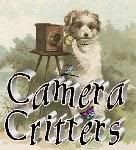Wilbur The Barn Owl Interesting Facts
This is my adopted son Wilbur the barn owl, with the heart shaped face who has my heart and lives at the Koret Animal Resource Center at the San Francisco zoo. Read about Wilbur's adoption here.
I am using Wilbur as an example to bring you some interesting facts about barn owls in general.
Barn owls have acute hearing with their ears being asymmetrical. On a barn owl their ears are covered by feathers with one ear being on the top right side of their head and the other being on the low left hand side. They work like cell phone towers with sounds bouncing off of each other. If a barn owl were blind, he would still be able to hunt for food using his keen sense of hearing.
Their eyes are tubular in shape which means that they do not have peripheral vision. That is why they have to turn their heads up to 270 degrees to see around them. They have no sense of smell at all and is why they have a heightened sense or hearing. Wilbur also has depth perception problems so you will often see him stomping around which is cause by his inability to perceive depth.
This is one of Wilbur's feathers. The zoo keeps these and other artifacts from their birds to teach children and people like me :) about these beautiful creatures.
In the wild, the barn owl dines on mainly rats and mice. In captivity at the zoo Wilbur and his owl pals along with Frank, the harris hawk and Monty, the turkey vulture are fed a rotating diet of mice, rats, rabbit, chicks and quail. Wilbur is eating a chick in this photo. These are not just mice etc... from the wild, they are laboratory mice and rats etc... which are cleaned and their intestines removed before they are fed to the owls and bird life at the resource center. Owls in particular have a high metabolism and the waste product is excreted almost immediately after they have been fed. The owls also regurgitate the feathers and any bones from the mice and feed which then becomes the owl pellet. The owls and birds are weighed daily to insure that they are maintaining an adequate weight and that their eating habits are akin to being healthy. Right now, Wilbur weighs 1 1/2 pounds. The largest owl at the center, Athena the Eurasian Eagle owl weighs 5 pounds.
This is Wilbur about to have dinner. When an owl becomes excited either by the thought of having food as in the above photo or by hearing various noises, they are baiting which means they will flap their wings to try and fly. If you are around the animal resource center during their feeding time, which I am, you will see all the animals flapping about. Wilbur has a beautiful and impressive wingspan.
Owls in general do not like to be touched and also like to be alone even when in the company of their own species. They do all have their own personalities. Wilbur for example likes to come out right before feeding time and hang out on the grass and his wooden perch while watching for his trainer to come out and get him ready for his meal. He will sometimes get into his bath and stomp around for his adoring fans. He is one of the owls who travels to the schools on the zoo mobile to entertain children during the school year. Yes, he has a fan base :) Owls in general are pretty friendly but don't try and mess with their nest. If you do, they will dive bomb you and that goes for all of the owls species.
I hope you enjoyed learning a little more about barn owls and my Wilbur. I am learning so much about these beautiful birds each day. I will have more for you in the weeks to come.
I am participating in Guest Heart Thursday

Click the above widget for more Camera Critters fun.











Comments
Cheers from Cottage Country E. Ontario
Andrea @From The Sol